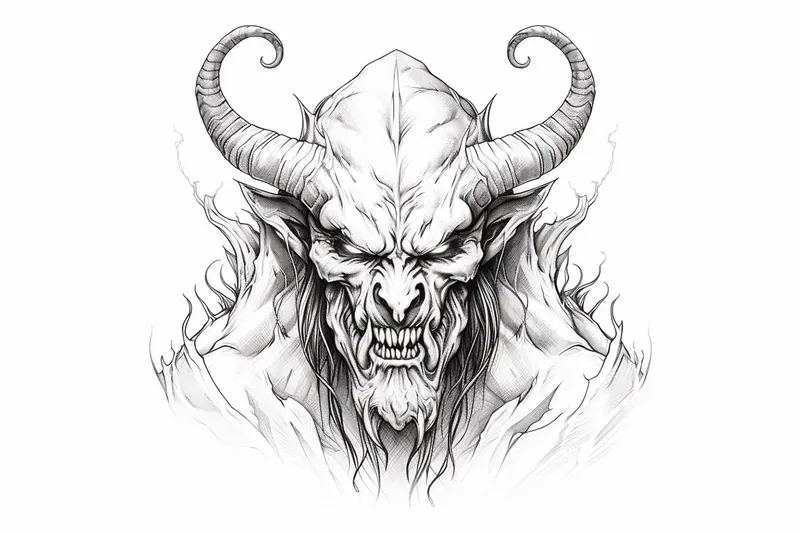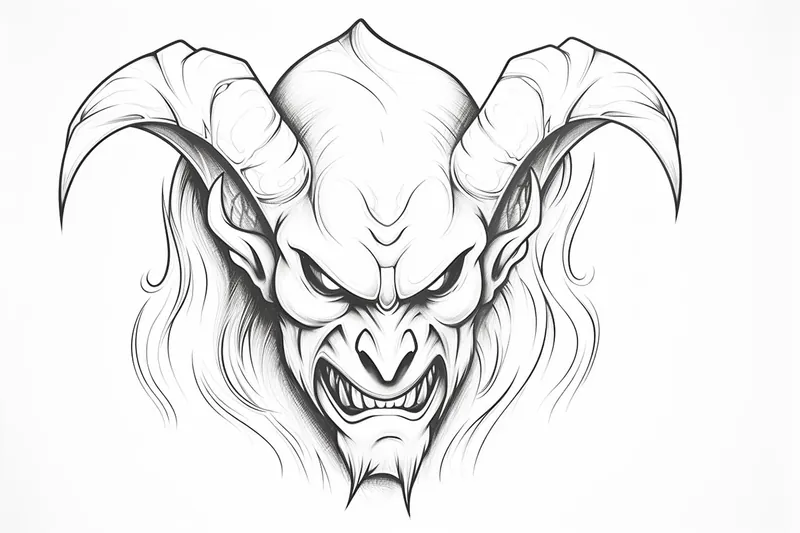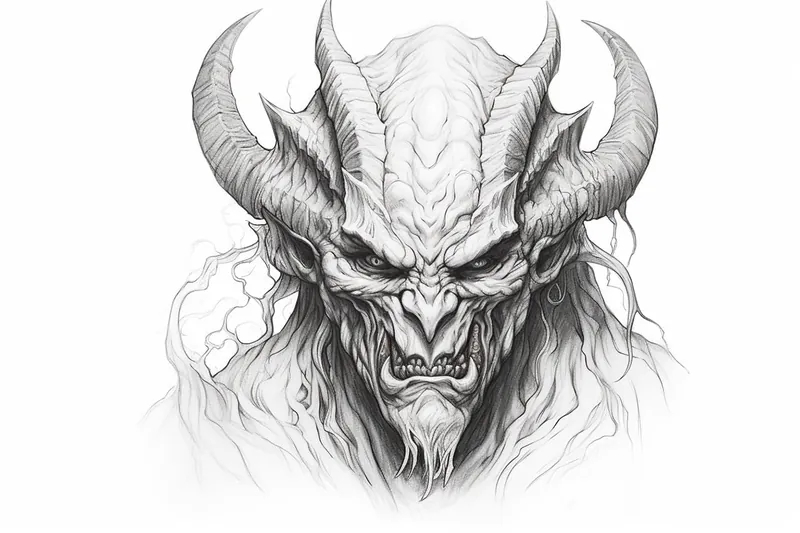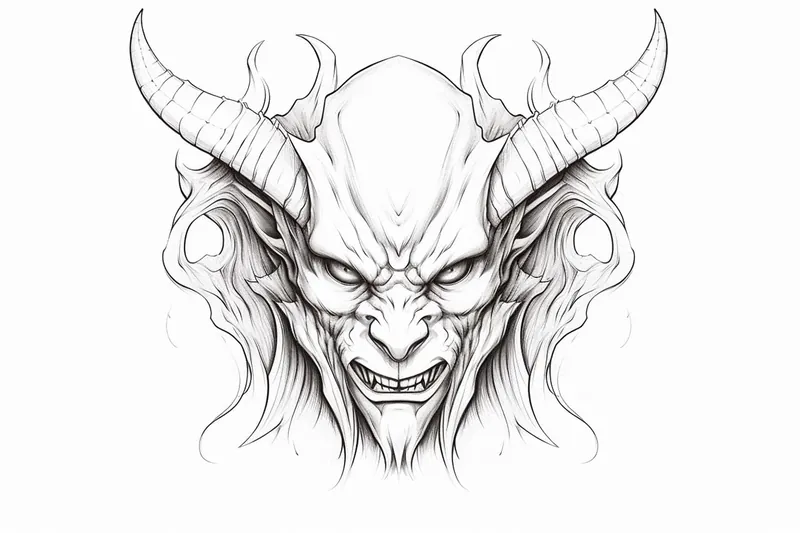How to Draw a Demon
Learn how to draw a demon from scratch with this step-by-step tutorial. Discover the process of creating unique and menacing supernatural creatures in this art tutorial.

Materials You'll Need
- Pencil
- Paper
- Eraser
Demons have captured the imaginations of artists and storytellers for centuries, appearing in mythologies, folklore, and popular culture around the world. Their fearsome forms, ranging from grotesque and monstrous to cunningly beautiful, make them an endlessly fascinating subject to explore on paper. Whether you're inspired by classic horror tales, fantasy novels, or your own original ideas, learning how to draw a demon allows you to unleash your creativity and experiment with unique designs, dramatic poses, and expressive features. Demons can serve as powerful symbols in art, representing inner struggles, chaos, or the unknown, making them a compelling choice for both storytelling and visual impact.
Many artists are drawn to supernatural creatures because they offer a break from drawing the ordinary and invite the artist to invent something entirely new. In this comprehensive tutorial, you'll discover how to draw a demon step by step, starting from basic shapes and building up to intricate details that give your creature personality and presence. This guide is suitable for beginners who are looking to practice fundamental techniques like sketching, shading, and adding texture, as well as more experienced artists who wish to refine their creature design skills. You'll learn how to use references, play with proportions, and make creative choices that bring your demon to life.
Don't worry if you've never drawn a supernatural being before—this tutorial will guide you through each stage with easy-to-follow instructions and helpful tips. Remember, the most important thing is to have fun and let your imagination run wild. By the end of this guide, you'll have your own original demon illustration and the confidence to tackle even more fantastical subjects in the future. Let's dive in and discover the secrets of how to draw a demon together!
Materials Required:
- Sketchbook or Drawing Paper
- Pencil (preferably an HB or 2B)
- Eraser
- Black Ink Pen (optional)
- Colored Pencils, Markers, or Paints (optional)
Now that we have our materials ready, let's dive into the process of drawing a demon.
Step 1: Research and Inspiration
Before you begin drawing, it's always helpful to do some research and gather inspiration for your demon design. Look at various depictions of demons in art, movies, or books to get a sense of their characteristics and features. This will help you create a more convincing and unique demon in your artwork.
Step 2: Basic Shapes and Proportions
Start by sketching out the basic shapes and proportions of your demon. Begin with a rough circle for the head and add a vertical line in the middle as a guide for the face. Then, sketch a rough oval shape for the body and lightly indicate the position of the limbs. Remember to keep your lines light and loose at this stage, as they will be refined later on.
Step 3: Facial Features
Focus on the demon's face in this step. Start by drawing the eyes, which are typically more extensive and intense than a human's. Demons often have sharp and angular features, so sketch in the eyebrows with a bold shape. Add a menacing expression by drawing a mouth with sharp teeth and a pointed chin. Experiment with different expressions to give your demon character and personality.
Step 4: Horns and Hair
One of the defining features of a demon is its horns. Add horns to your demon's head by drawing curved shapes around the top or sides of the head. Make them pointed and jagged to give your demon a more menacing appearance. Next, sketch in the hair or any additional details on the head, keeping in mind that demons can have wild and untamed hair or even bald heads.
Step 5: Body and Limbs
Tip: As you work through your demon drawing, consider using a variety of reference images, both for anatomy and stylistic inspiration, to create a more dynamic and original design. This can help you visualize unique features and poses, and encourage you to experiment with different elements like facial expressions, body shapes, and accessories that reflect the character and personality of your demon, ultimately enhancing the overall impact of your artwork.
Refine the body and limb shapes of your demon. Add muscle definition or additional limbs, depending on your concept. Demons are often depicted as muscular and powerful creatures, so emphasize these characteristics in your drawing. Experiment with different poses and positions to make your demon more dynamic and exciting.
Step 6: Clothing and Accessories
Now it's time to add clothing or accessories to your demon if desired. Demons are often portrayed wearing tattered robes, armor, or carrying menacing weapons. Use your imagination to design unique and intricate clothing that complements the overall look and personality of your demon.
Step 7: Refine and Ink
Once you are satisfied with the basic sketch, go over the lines with a darker pencil or ink pen. This will help define the shapes and make them stand out. Take your time and be mindful of the details. You can also erase any unnecessary guidelines or construction lines at this stage.
Step 8: Adding Details and Shadows
Add details and textures to your demon to bring it to life. Focus on smaller elements such as scales, fur, or any other features you want to emphasize. Use cross-hatching or shading techniques to create depth and dimension. Shadows are essential to give your demon a three-dimensional appearance, so consider the light source and add shading accordingly.
Step 9: Coloring (optional)
If you want to add color to your demon, grab your colored pencils, markers, or paints. Consider the color palette you want to use, and start by applying base colors to different areas of your demon. Build up layers of color to create depth and texture. Don't be afraid to experiment and blend different colors to achieve the desired effect.
Wild Inspiration: Imagine fusing your demon design with the breathtaking spectacle of a living nebula—its horns and wings swirling with billowing cosmic clouds, star clusters, and flashes of celestial lightning. Instead of skin, its body could be formed from shifting galaxies and shimmering stardust, with black holes for eyes that draw in the viewer's gaze. You might surround your creation with orbiting planets or ethereal comets that it commands as minions, turning the demon into a cosmic overlord of the universe. Let the colors blaze with iridescent purples, electric blues, and fiery golds, pushing well beyond traditional reds or grays, and experiment with glowing textures to capture that otherworldly, awe-inspiring energy.
Conclusion
Congratulations on completing your demon drawing! By following these steps, you have learned how to create a unique and menacing demon from scratch. Remember, the key to improving your drawing skills is practice, so keep exploring and experimenting with different demon designs. Enjoy the creative process and let your imagination run wild!
Gallery of Demon Drawings




Fun Facts About Demon
- The word demon comes from the ancient Greek "daimon," meaning a spirit or divine power.
- In many cultures, demons are not always evil; for example, in ancient Mesopotamian mythology, some demons protected people from harm.
- The famous demon Mephistopheles appears in the classic German legend of Faust, where he makes a pact with the protagonist.
- In Christianity, demons are often considered fallen angels, as described in the Bible and other religious texts.
- Japanese folklore features a wide variety of demons called oni, known for their horned heads and fearsome appearance.
- The medieval text The Divine Comedy by Dante Alighieri describes many different types of demons in its depiction of Hell.
- In Hinduism, demons are called asuras and often battle with gods in ancient epics.
- Many modern horror movies, such as The Exorcist, feature demons as central antagonists.
- Some cultures believe that demons can be warded off with protective symbols or rituals, as explained in amulet traditions.
- Artists throughout history have depicted demons in a variety of forms, from monstrous to beautiful, as seen in the works of art history.
Suggestions for Scenes and Settings for Demon Drawings
- A demon emerging from a swirling portal between worlds, surrounded by glowing runes and magical energy.
- [A regal demon lord seated on a throne made of bones and skulls](https://yonderoo.com/how-to-draw-a-skull/) in a fiery, cavernous underworld palace.
- A mischievous impish demon causing chaos in a medieval village at night, with frightened townsfolk reacting.
- A beautiful but sinister demon disguised as a human, with subtle horns or glowing eyes revealing their true nature.
- A demon and an angel locked in an epic battle in the skies above a ruined cityscape.
- A group of demons gathered around a bubbling cauldron, brewing a mysterious potion deep in the forest.
- A chained demon breaking free from ancient magical restraints in a forgotten temple filled with strange symbols.
- An elemental demon rising from lava or storm clouds, embodying the power of fire or lightning.
- A sorrowful demon gazing into a mirror, confronting their own monstrous reflection and inner turmoil.
- A demon stalking through a misty graveyard at midnight, with eerie blue flames lighting the scene.